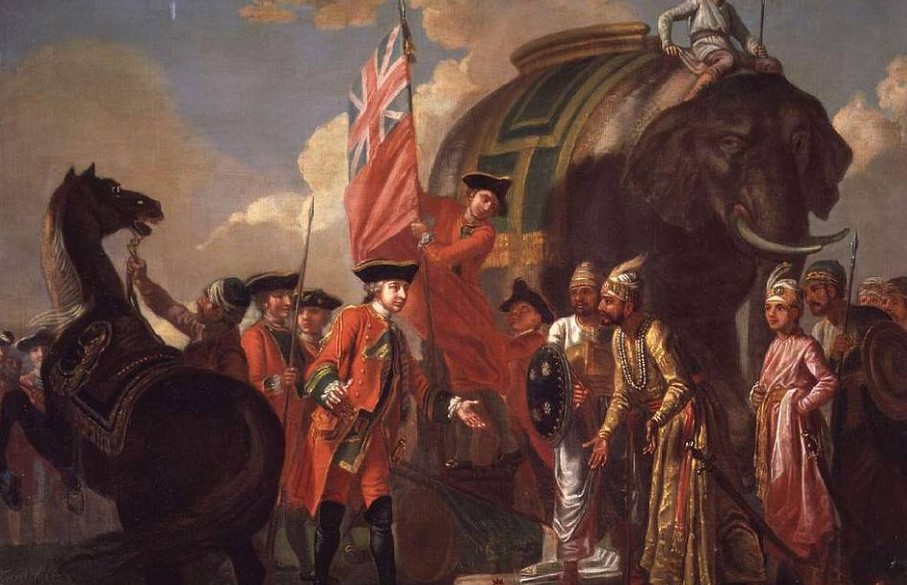
Modern History MCQs – 1 (Arrival of Europeans in India)
Most important multiple choice questions from the chapter – Arrival of Europeans in India MCQs.
Home » UPSC Study Materials » Prelims Express » Chapterwise MCQs » Modern History MCQs » Modern History MCQs – 16 (Individual Satyagraha and Cripps Mission)
Individual Satyagraha and Cripps Mission MCQs with answers and explanations for UPSC and Other examinations.
1. The August Offer was proposed by who among the following ?
(a) Lord Linlithgow
(b) Lord Hastings
(c) Lord Irwin
(d) Lord Canning
Correct Answer – (a) Lord Linlithgow
2. Consider the following statements about The August Offer :
1. It was rejected by Congress.
2. It was accepted by Muslim League.
Which of the above statements is/are correct ?
(a) 1 only
(b) 2 only
(c) Both 1 & 2
(d) None of the above
Correct Answer – (a) 1 only
3. The Individual Satyagraha was launched in the response of which among the following ?
(a) August Offer
(b) Cabinet Mission
(c) Cripps Mission
(d) Communal Award
Correct Answer – (a) August Offer
4. Who among the following was selected as the second Individual Satyagrahi by Mahatma Gandhi ?
(a) Jawahar Lal Nehru
(b) Sardar Patel
(c) Sarjoni Naidu
(d) Vinoba Bhave
Correct Answer – (a) Jawahar Lal Nehru
5. In which year did the Cripps Mission come to India ?
(a) 1940
(b) 1942
(d) 1946
(c) 1944
Correct Answer – (b) 1942
6. Which among the following was called ‘Post-dated Cheque drawn on a failing bank’ by Mahatma Gandhi ?
(a) August Offer
(b) Cabinet Mission
(c) Cripps Mission
(d) Communal Award
Correct Answer – (c) Cripps Mission
7. Consider the following statements about The Cripps Mission :
1. It offered ‘Dominion Status’ for India after the war.
2. It kept defense and external affairs in the hands of Viceroy.
Which of the above statements is/are correct ?
(a) 1 only
(b) 2 only
(c) Both 1 & 2
(d) None of the above
Correct Answer – (c) Both 1 & 2
8. Who of the following Prime Ministers sent the Cripps Mission to India ?
(a) James Ramsay MacDonald
(b) Stanley Baldwin
(c) Neville Chamberlain
(d) Winston Churchill
Correct Answer – (d) Winston Churchill
9. Who of the following was the Viceroy of India when the Cripps Mission arrived ?
(a) Lord Chelmsford
(b) Lord Wavell
(c) Lord Linlithgow
(d) Lord Montague
Correct Answer – (c) Lord Linlithgow
10. The Congress Ministries in all the provinces resigned in the year 1939 because of which among the following reasons ?
(a) Congress was unable to make a cabinet in the other many provinces
(b) Socialist wing of Congress made it impossible to work for the cabinet
(c) Communal rights in the provinces
(d) British Government involved India in the Second World War
Correct Answer – (d) British Government involved India in the Second World War
More questions are coming soon. Join us on Whatsapp for latest updates: Join CivilsCracker on Whatsapp

Most important multiple choice questions from the chapter – Arrival of Europeans in India MCQs.

Most important multiple choice questions from the chapter – Battle of Plassey and Battle of Buxar MCQs.

Most important multiple choice questions from the chapter – Social and Religious Reform Movements MCQs.

Most important multiple choice questions from the chapter – Anglo Mysore Wars and Anglo Maratha Wars MCQs.

Most important multiple choice questions from the chapter – Governor Generals of India MCQs.

Most important multiple choice questions from the chapter – Revolt of 1857 MCQs.

Most important multiple choice questions from the chapter – Organizations before Indian National Congress MCQs.

Most important multiple choice questions from the chapter – Important Sessions of Indian National Congress MCQs.

Most important multiple choice questions from the chapter – Partition of Bengal and Swadeshi Movement MCQs.

Most important multiple choice questions from the chapter – Surat Split and Lucknow Pact MCQs.

Most important multiple choice questions from the chapter – Arrival of Gandhi and Jallianwala Bagh Massacre MCQs.

Most important multiple choice questions from the chapter – Khilafat and Non Cooperation Movement MCQs.

Most important multiple choice questions from the chapter – Simon Commission and Nehru Report MCQs.

Most important multiple choice questions from the chapter – Civil Disobedience Movement MCQs.

Most important multiple choice questions from the chapter – Communal Award and Poona Pact MCQs.

Most important multiple choice questions from the chapter – Quit India Movement MCQs.

Most important multiple choice questions from the chapter – Indian National Army and Royal Indian Navy Mutiny MCQs.

Most important multiple choice questions from the chapter – Cabinet Mission and Formation of Constituent Assembly MCQs.

Most important multiple choice questions from the chapter – Independence and Partition of India MCQs.
We are adding new Notes, Chapterwise MCQs, Quizzes, Previous Years Questions everyday
We are adding new Notes, Chapterwise MCQs, Quizzes, Previous Years Questions everyday